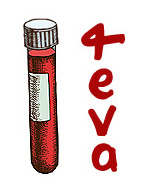Are you a boxing coach who now finds himself working with MMA people, your own gym closed or all but empty, as you shoulder your way into some crowded Mecca for mat monsters?
Don’t do it!
Please sir, step away from the train tracks.
Think of the conductor’s survival guilt and take a deep breath.
I know, watching your art die is difficult, so bear with me—I feel your pain brother!
You can still make a difference.
If you are that boxing coach, wondering if he can even continue teaching his art in the new pugilistic world of MMA, this piece is targeted at you. To implement the principles discussed will require you to be patient with your fighters’ impatience and willing to coach at different levels of commitment. A red flag just went up in your mind’s eye you arch conservative task-master. We will get back to this. Until then keep an open mind and hope that a heap of trash does not fall in…
Might you be an MMA coach who has not competed as a boxer, and has not prepared boxers for boxing competition against other boxers? Would you like to improve your grasp of boxing as an art so that you can more meaningfully integrate it into your system?
If so this piece is also targeted at you. To implement the principals discussed will require you to be patient with the art of boxing. Boxing, as an art, requires incubation in most fighters.
Identifying the Athlete’s Boxing Commitment Level
MMA has four basic skill sets: wrestling; submissions; boxing; kickboxing [Muay Thai being the overwhelmingly preferred form]. A topflight school will have a specialist coach for each of these and a head coach who is in charge of integrating the various arts. Most fighters are going to have a favorite range; a reflection of their body-type and/or psychological makeup. The fighters will fall into four categories:
1. Fully Integrated Mindset
The most coachable fighters see MMA as an art, with all of the component parts of equal importance. The fighter who seeks to excel in all four ranges will be highly coachable. The big challenge here will be making sure that the boxing style that you help this fighter develop is in line with his body-type, the rest of his skill set, and the head coach’s game plan. This fighter gives you, as an assistant coach, an opportunity to collaborate with the other coaches and explore the many ways in which your art interfaces with the other component arts of MMA.
2. Full Commitment Boxer
Some fighters will gravitate toward boxing for various reasons. What are these reasons? Maybe he is weak on the ground and boxing is his crutch. Perhaps he just has the right body for boxing. Maybe he is just tougher than his mates and feels confident in hands range and wants to stay in his comfort zone. He may have dreams about winning KO of the night bonuses and having a cool highlight reel. You and the head coach need to know why this kid is gravitating toward his hands, and need to address this, each in your own capacity. Ideally for you, this fighter is the kid who would have been boxing back in your day and wants to be the best boxer he can be.
3. Supplementary Boxer
Not every guy is cutout to box. There are plenty of MMA fighters who are strong fighters and gravitate toward wrestling, submissions or kickboxing rather than boxing. For a fighter who is not inclined to maintain the fight at boxing range as long as he can, your purpose is more limited, but no less important than, coaching a fully integrated or full commitment boxer. In large part you are dealing with stylistic issues here and will have to lean on the other coaches for their expertise.
4. The Disaster in Progress
MMA is such a ‘big’ pursuit in terms of the available skill set that the less intelligent or egotistical fighter will tend to channel himself into a self-limiting pattern. It is the head coach’s job to sort out this kind of head case. This may impact you by way of the fighter discounting boxing altogether, because, perhaps, he is prejudiced against boxing for any number of reasons. You still need to support this knucklehead. Dealing with him is an art all in itself.
Knowing What You Don’t Know
Hopefully you have wrestled or have been involved in one of the other root MMA arts. The chances of your knowledge in any of these fields being on par with your boxing knowledge is slim. You have to be able to learn enough about the fundamentals of the arts taught by the other coaches to become a meaningful contributor to the team. In some ways being on an MMA team is as much like being on the coaching staff of a ball team as being a trainer at a boxing gym.
An example from my personal experience is the time I worked with a jiu-jitsu/Muay Thai fighter. This guy’s boxing style was really strange to me. It was awkward, but I could tell it was not accidental. He had trained to fight in this fashion. This was just a seminar. I was not going to be able to help him with his hands in two hours by trying to retrain him, especially since I have zero experience in his arts. I stopped him and asked him to demonstrate the full range of footwork and strikes in his arsenal. I would not want to fight this guy, and, on top of that, his kickboxing was just a way to get you on the ground. I stepped back, and said, “How about if we change nothing about your balance and guard, and just add a supinated jab to save your left thumb for the grappling stuff?”
He nodded ‘yes’ enthusiastically and I worked on adding that jab to his existing arsenal, without trying to mess with his footwork. I vaguely understood that he was up on the balls of his feet and punching on a higher line than I was accustomed to because his heavy artillery was in his kicks and knees. I did not, however, have the understanding of Muay Thai necessary for me to go messing with his hands without either driving him away or compromising his kicking leverage. Besides, I sensed that some of the difference in his footwork came from the fact that both of his arts were barefoot arts. And, I reminded myself, MMA is practiced barefoot as well.
You have to know what you don’t know, and hopefully learn at least enough about it to know how not to ruin some other coach’s work.
Knowing What the Fighter Doesn’t Know
The fighter above was a good example of a well-schooled kid from another art with an open mind. Decades earlier in a boxing gym I had watched the former #4 middleweight in the Muay Thai world coach, and had seen his Thai trainer kick the bag. When I saw this kid shadowboxing many years later it seemed familiar. When I asked for a demonstration of his Muay Thai arsenal I got one that looked familiar, minus the striking equipment.
As a boxing coach in an MMA school you will find yourself coaching fighters who may know much more about related aspects of MMA than you. This is good, if you know what they don’t know. Below I will give you an example of an MMA meathead who does not know nearly as much as he claimed.
I began working with an MMA pro who just threw hooks and crosses. He did not have a jab in his arsenal. I immediately began teaching him the jab. He told me that it was not necessary to jab when one has ‘the power of Muay Thai!’
He explained in vague terms that Muay Thai was superior to boxing. I became suspicious because he did not mention the foot-jab, and only did back-leg round kicks. I know the three best Muay Thai guys in the area, and know the schools out of which three other notable practitioners teach, and have coached for a few good MMA clubs. So, although I could not do or teach Muay Thai, I know good Muay Thai when I see it, just like a moviegoer knows good acting and bad acting when he sees it.
I asked the fellow, who had presumably earned his ‘immunity to the jab’ superpowers somewhere, who had trained him. He could not come up with a name, admitted to training himself, and said, “I just work around, here and there.”
I learned this bullshit detection method from my boxing coach, who knows nothing about karate. He does, however, know good karate when he sees it, and once coached for the man who began the ‘black karate’ movement in Baltimore circa 1970. If you come into his gym claiming a karate pedigree and you don’t know that guy, you better be able to kick like you know that guy, or you get no respect.
Dealing With the Other Coaches
For me this has been the fun part about MMA, working with other coaches. The only trouble I have had was with ‘pure MMA’ coaches who have no base. A base art is one of the MMA precursors. A guy that has not wrestled, grappled, boxed, or kick-boxed, essentially has no base. Not all of these guys are bad. If they are highly intelligent they can be among the best. Their weakness as a group is in their approach to boxing. These fellows are often committed to expanding their knowledge base and hence their ability to coach hundreds of techniques. This is good for many sports, I suppose. For boxing, it is the recipe for disaster.
Let me state ‘the rule’ here and now; the boxing truism that every trainer once preached, but which few surviving boxers and boxing fans seem to understand, ‘Everything works off the jab.’
I once had an hour to spend with a new MMA fighter on his first day in the gym. I taught him how to move and jab. If the fighter is not strong; if he is a skinny guy, I will also teach the straight right behind the jab, with a jab behind that. I never show strong guys power shots until they have a good jab. The kid had a good work ethic so I switched him southpaw and he worked it both ways so as not to stress his left shoulder. Before I left I said, “The rule is, once a guy starts throwing the hook in the gym he stops progressing with the jab, and without a good jab, nothing, not even the hook, works in the ring. Knuckleheads are going to say ‘why aren’t you hooking?’ Do not hook. I will show you the hook when you are ready. Throw four jabs to every straight and learn to move.”
I came back a week later and the meathead MMA coach came up to me, pride in his eyes, “Mister James, I’ve been working with the new guy.”
I watched the new guy hit the bag.
His jab was low and looped across.
KO by cross.
His right dropped before he threw it.
KO by hook.
He then threw a low reaching shovel hook.
KO by cross.
He then finished with an uppercut thrown off the hip.
KO by hook.
The kid was already ruined as a boxer, before I had even stepped on the bus when I left the gym the week before, because some MMA meathead had just assumed that Mister James was being too stingy with the secrets of boxing. He’s not a bad guy, just a young coach that wanted our fighter to have all four punches in his arsenal.
This is the place where boxing and MMA often suffer a disconnect, in isolation training. Most MMA people come from some kind of martial arts background that features dozens if not hundreds of techniques. Boxing, as taught in white collar classes and in JKD seminars, breaks out all four punches right off the bat. This is understandable but wrong. What the old-timers said is true, the jab is what makes a boxer a boxer, rather than just some guy swinging punches. Break that rule at your fighter’s peril.
I train two versions of the jab, than a right, then two more versions of the jab, than a variation on the right, then another version of the jab, before I show a fighter any rotational [hook] or angular [uppercut] punches.
Boredom, Toil and Pain
A kid comes into a boxing gym.
Your job as a coach is to discourage him so that he quits early on and does not waste your time.
You attempt to bore him to tears with line drills for a week at least.
If he does not quit you attempt to work him to tears on the bags.
If he does not quit after six weeks of hitting the bags, you put him in the ring with some guy he can’t hit, and watch him get punched in the nose for three rounds while you give instructions he cannot hear because his brain is sloshing against the back of his skull.
Not everyone coaches like this but it is a pretty reliable model. You bore them, work them, and then beat them. The boredom part is the most important for learning boxing fundamentals. Whether it is shadow boxing on the line, in the ring, or on the floor in front of a mirror, non-impact solo training is the meditative aspect of boxing overlooked by many MMA people. This is where the fighter learns about his body and harnesses it to his mind.
The very best boxers I have known did primarily shadow boxing as their solo exercise.
The worst, flattest-of-face boxers I have known, primarily hit bags as their solo exercise.
The boxer needs to hit air at the same ratio in training as he will in a fight. In the ring, even the best pros have a miss-to-hit ratio of 2-to-1. Mortal fighters are generally around 3-to-1. Missing a punch hurts a fighter physically, tactically and mentally—unless he has trained it.
Also, if he has not cultivated his balance on the line and his awareness before the mirror, the punching bags will not be as beneficial to him as they might be. After the kid graduates from the line drills and can shadow box proficiently, I recommend a three-bag rotation interspersed with shadowboxing:
1. Line drill shadow boxing
2. Double-ended or reflex bag
3. Free-style shadow boxing
4. Heavy bag
5. Corner-drill shadow boxing
6. Speed bag
7. Defensive/counterpunching shadow boxing
I also recommend that the entire training session begin and end with shadow boxing. The bag you do not have can be replaced by focus mitts; and please remember that they are focus mitts for developing timing and accuracy, not punching pads.
Full-commitment Fundamentals
Bore this kid to death! An MMA guy with a boxing focus needs supreme balance and sensitivity to be able to sprawl and brawl with the jiu-jitsu snake charmers and wrestling mutants that will be trying to drag him down to the floor. Priorities for this fighter are:
1. Staying out of the pocket or wheel-house is even more important against grapplers and kickers than against some Marciano type slugging monster. Forget bobbing-and-weaving, hugging-and-mugging and head hunting with the hook. You want a classic boxer or a counterpuncher not a peek-a-boo slickster or a pocket brawler.
2. Be very careful about leading with anything other than a jab.
3. The cross is still your best counterpunch.
4. The classic Philadelphia hook is problematical in the cage. It is a guaranteed ticket to the floor if you miss. I recommend a shovel hook to the jaw. This punch actually gets better extension than the vertical fist hook and maintains the elbow down under your heart to defend against the kick to your floating rib or help sprawl against a waist-shoot.
5. An active hand defense is much needed for a fighter who will not be protected from the clinch by the rules. Mitt drills should focus on using the palm to assist movement off line by riding the opponent’s shoulder or elbow. This is a minimalistic sprawl which I have always just called ‘goon-surfing’. Stuffing the head is the most aggressive expression of this concept, while ‘tactile checking’ of the glove or forearm is the most conservative. This is parrying with Velcro for you old-timers. Martial arts people call it trapping. This drill needs to be practiced with a mitt holder who will, and knows how to, clinch up. If your fighter just practices this with you, old man, while you stand there, he will not develop the sensitivity he needs. He is actually learning to use his palm to detect, react to, and even take-advantage of or affect, his opponent’s balance. This is literally using your hand to achieve hip-to-hip sensory perception. If I was going to train Floyd Money to fight Uriah Faber [and actually wanted him to win], this is all we would work on.
Supplementary Fundamentals
In the 1970s and 80s I fought some really stupid mixed bouts against other meatheads of various backgrounds. I did so as a boxer, with bar-hands and foam karate chops against mostly larger men. My sense of how boxing works against other arts is hence subjective and somewhat biased toward little boxer versus wrestler or karate guy.
I had a lot of success against wrestlers who could not hit and karate guys who could not clinch. The type of fighter I have had no luck with, even in MMA stick fighting, is the dude that can kick and grapple. His kicks force me inside where he grapples me—end of fight. I personally think the two primo mixes are Muay Thai/wrestling and jiu-jitsu/boxing. Of course, we are now in the modern MMA age where all four arts and more are supposed to be integrated into one seamless whole. I can only offer limited insight here.
Let’s base my limited advice on which art your fighter comes to you with.
Wrestling makes the best MMA base. First off, the wrestler’s biggest boxing problem is he has spent a decade or more squared up. For this reason they tend to convert as brawlers swinging out of the pocket. Also, due largely to the wrestler’s build, there are problems teaching them how to punch. With an extremely muscular freak [like Bader] I recommend Muay Thai. Guys with massive lats and traps have a hard time staying oblique and tend to let their hands drift beneath their chin, opening them up for the KO. If you want to see a classic example of an unsuccessful wrestler to boxer conversion, look at Bader versus Machida in 2012. Sometimes you are not the best guy for the job.
That said, some wrestlers have converted into really powerful boxers. Still, I go with body-typing here to determine how much of a role boxing should play in a wrestler’s MMA strategy, as opposed to kick-boxing.
Point-style karate people need to be deconstructed and retrained. Let your kicking coach fix their leg arsenal, before you step in. These people will not give up on the romance of the kick. So, let a real kicker at least up-gun them before you try to minimize their hands liability. You will probably never be able to get this type to put leverage on their rear hand. Stress a power jab and movement off the jab.
Kung fu and kenpo people tend to ‘roll’ punches up from under their chin, like an upright shoe-shine. Work on their guard to minimize chin exposure and stress counterpunching.
Traditional karate people, who fight like the 1970s Japanese Karate champions [are even more rare than you], are not used to defending the face, so work on their guard. The Muay Thai coach should work on the kicking game before you get involved. As far as punching I suggest a shovel hook, as the good karate fighters have a ridge-hand strike which uses similar body torque. Their most limiting factor is a tendency—in some styles—to carry the rear shoulder forward, being squared from the hips up. See if you can get that shoulder back and narrow their guard. The extended shovel-hook is good for this.
That’s it for style-conversion details. I am not an MMA guy, just a trainer that has assisted the real MMA guys. Being a fan does not make me an expert.
The Disaster in Progress
Okay, back on Planet Meathead, you are shaking your head as the fighter you have been assigned does not listen to you. After all, you are just a boxing guy—pops. Try diplomacy. All idiots are susceptible to suggestion. You don’t have to be Harry Houdini to pull this off.
Watch him. If he has actually got any potential, or has done any fighting, he will do something during his haphazard training that could be dangerous to the opponent. That something is probably something he loves doing, because it is all he does well. Now, as he goons it up on the mat watch and try to think of a single isolated boxing technique that could make his secret weapon even more devastating. It might not be much.
Maybe he is always doing that spinning back-fist. Okay, I understand you not wanting to encourage that, so let’s not befoul our art by using it to set up that alien punch. Where does his hand end up after he throws that Hollywood punch? Give him a boxing technique from that position, as a finisher.
After you have given him something that works [probably better than what he was doing] than he will at least see you as a tool kit for more nasty tricks. This is your entry point, from where you may at least try to help him grow up and submerge his ego beneath a learning process.
Preserving the Toolkit for Posterity
Right now I only have one boxer. That is not enough raw material for me to develop into the next Emmanuel Steward [Rest In Peace]. However, we may be looking at the death of boxing as a sport before our own life is over. I still train, even though I’m no longer even fit to spar, so I can at least practice coaching this one body type. In large part, body-typing is the art of the boxing coach—and of the elderly aunt. It has never ceased to amaze me that the two kinds of people who can glance at a stranger and guess their weight are old fashion-conscious ladies and old grousing boxing coaches.
MMA is the place where all of those bodies are landing. It might not be boxing, but boxing is there. And the grappling and kicking coaches want your help. Believe me, comparing notes with a ground fighter in 2013 is far better than arguing with the wannabe martial arts movie stars of the 1970s about their bizarre array of secret animal punches and their ability to levitate out of your way as they stole your life force and used it to cheat gravity.
When I was the same age as the MMA athletes you are training all we had was silk-lined fantasy. Now there is a real sweaty reality in a cage near you, and you just might be able to help some hard working young wrestler who actually knows how to make weight, box, if only in spots. Even so, it’s still boxing, and it’s a fact, that most of the hands being taped today are being taped cage-side. You might-as-well wield the scissors.
The Punishing Art











loved reading your school of thought.. reminds me of a gentleman i met in iraq in 04...good deal.. if you have anything else and the time, post something to my facebook page for all my friends to see. really enjjoyed it brother.. God bless... matt plever
Thanks for your interest Matt. I am not FaceBooked or FaceBook literate, so can't get there. But, if any of the free content on this site is something you think should get out there feel free to copy and paste it. [I did this with Marc Denny's e-mail last week] I do two boxing related articles a month. My next one is on focus mitts, which I see as being misused these days.
I hope your training is going well.
james
A well crafted article full of solid information and guidance obviously derived from direct, repeated, personal experience. You got a new fan. Best regards, Doc
Thank you Doc.
Another follow up titled 'pocket boxing' should be out as soon as I get over the headache from this molar that got knocked loose recently. Your good regards are also appreciated. At this advanced stage of easily hit deterioration I 'll take all of the regards I can get.
Peace.
James, what is your email address? If you are the other of three boxing books that I find on Amazon I am interested in learning how I may acquire inscribed copies from you.
Thank you
Clay, I am flattered.
my email is jameslafond dot-com at gmail dot-com
Thanks for the informations Mr. LaFond.
Since i don't have any good boxing coach nearby, it's wonderful to have your solid information.
Any question you have, Bruno, send it via email and I will answer ASAP.
This article triggered a memory for me. This documentary I saw. Truly powerful and bloody and ...awful. It's unsettling. You want to be a fighter? Watch this first. James talks about combat a lot but he doesn't really talk about the toll it takes on you. Physical and mental. This movie does. It's very powerful. I looked around and found a trailer to the movie. If you can find the movie watch it, you won't be disappointed.
The Smashing Machine: The Life and Times of Extreme Fighter Mark Kerr
youtube.com/watch?v=dY4BmZ0WNSE